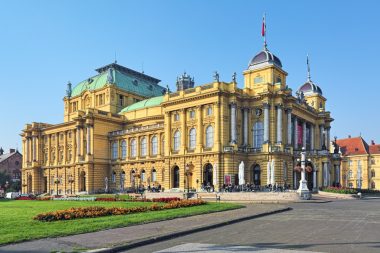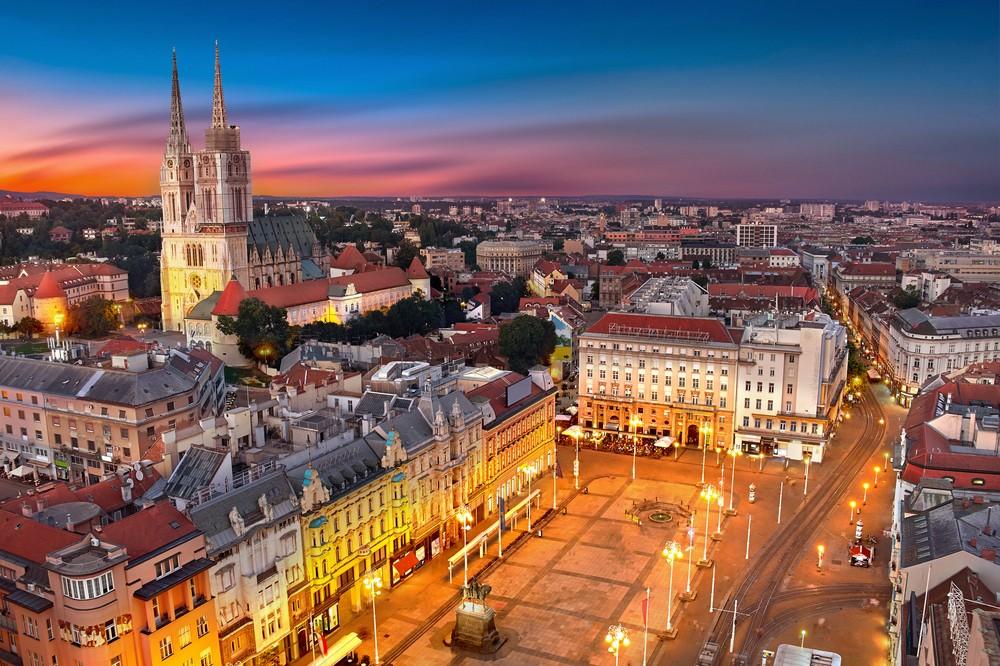Only about 170 kilometers away from the Adriatic coast is Zagreb, which combines the southern rural flair with Central European culture. The capital of Croatia with almost 804,000 inhabitants offers many sights with a long history and modern facilities as well as parks, which are described in more detail in the following article.
Lotrscak Tower

Green Horseshoe
In 1874, the architect Milan Lenuci laid out horseshoe-shaped parks in the lower town. In Zagreb’s green lung, for example, there is also the Botanical Garden, which can be found in Maksimir Park. With its 50,000 square meters, it has a wide variety of plants. Among them there are also numerous exotic green and flowering plants, mainly from Asia. The charming small buildings, artificially created water facilities and idyllic paths ensure relaxation in the botanical garden. The university also operates various greenhouses there, which are accessible to visitors for viewing.
Stone Gate
This old city gate is called Kamenita Vrata by the Croats. There is a picture of Mary with the baby Jesus in the building. Miraculously, this object survived a fire in 1731. Because of this, the Stone Gate is a special place for the Croatian faithful. Today there is a small chapel and a prayer room where numerous people make pilgrimages. The wrought-iron grille, artfully made in 1758, is also admired in the meeting place.
Republic Square
The best starting point to see sights in the city is Ban Jelacic Square, which was named after Josip Jelacic Buzimski. There is an impressive equestrian statue of this national hero on the square. The centre of Zagreb is divided into three areas, namely Kaptol, Gornji and Donji Grad, all of which can be reached through the central Republic Square.
Unique cable car
The cable car takes you from the Republic Square to the upper town. Cultural monuments from different eras can be found here. The cable car, which was first put into operation in 1893, has been transporting passengers every ten minutes for at least 100 years. The cable car complex with a distance of 66 metres, which is now a listed building, is one of the shortest cable cars in the world. It is possible to climb the upper town effortlessly via the stairs of the cable car on the side. However, the inexpensive trip over the rooftops of Zagreb is definitely recommended.
Mirogoj Cemetery
North of the Croatian capital is one of the most beautiful cemeteries in Europe. Construction of the complex began in 1876 under the architect Hermann Bollé, while the last buildings were completed in 1929. The special thing about the Mirogoi Cemetery is that the graves are equal to all religions found in Croatia. Catholic, Jewish, Muslim and Orthodox graves stand side by side here. This cemetery is surrounded by a magnificent red limestone wall and lined with enchanted arcades. Various houses and pavilions as well as the sculpture gallery make the place interesting for tourists, who find reflection and peace here. Numerous important personalities from Croatian history, art and culture were buried in the Mirogoj Cemetery. Even Doctor Franjo Tudman, the first Croatian president, was buried here in 1991.
Dolac – The largest market in Zagreb

Museum
This museum houses an extensive collection of old coats of arms, paintings, uniforms and many other artifacts of the Croatian capital. It provides visitors with insightful information about Zagreb’s rich cultural history. The clearly arranged and chronologically arranged collections vividly report on the architectural development of individual buildings through different epochs and thus retrace the emergence of today’s modern Zagreb. The city museum is housed in a former convent of the Poor Clares and in a tower built in the twelfth century. It is located near the Parliament building and the seat of government


